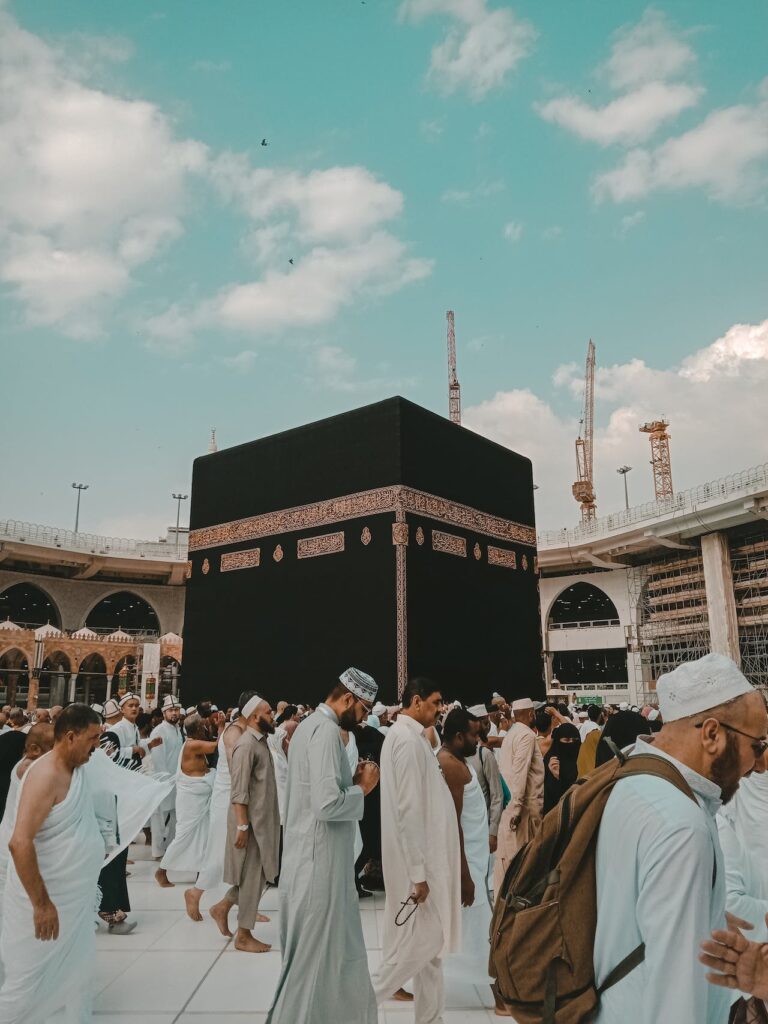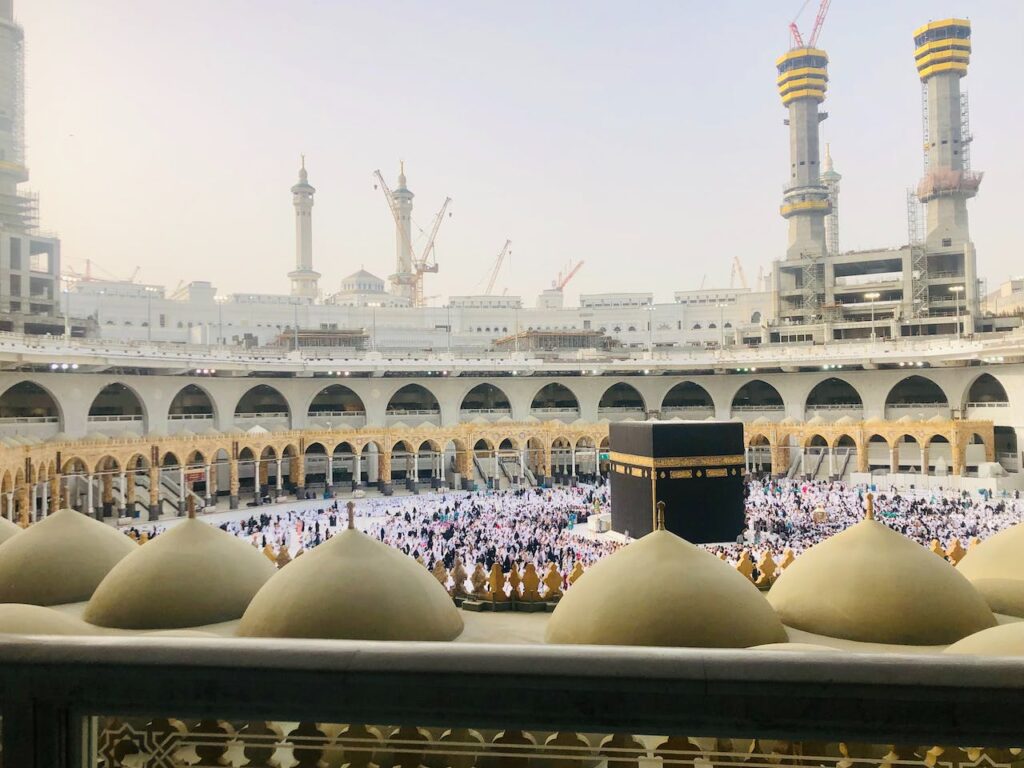Umrah and Tawaf are two significant acts of worship performed by Muslims, particularly during visits to the holy city of Mecca. In this article, we will delve into the difference between Umrah and Tawaf, exploring their meanings, rituals, and significance in the spiritual journey of a Muslim.
The Difference Between Umrah and Tawaf
There are many differences between Umrah and Tawaf, such as:
Firstly, Meaning and Purpose
Umrah refers to the lesser pilgrimage undertaken by Muslims to the Kaaba in Mecca. It can be performed at any time of the year and holds immense spiritual value. Umrah entails specific rituals, including the donning of Ihram, performing Tawaf, Sa’i, and shaving or trimming hair.
On the other hand, Tawaf refers to the act of circumambulating the Kaaba, the holiest shrine in Islam. It is an integral part of both Umrah and Hajj pilgrimages. Tawaf involves walking around the Kaaba 7 times in a counterclockwise direction, with reverence and devotion, as an expression of submission to Allah and seeking His blessings.
Secondly, Timing and Obligation
The Umrah is considered a voluntary act of worship, and Muslims can perform it at any time of the year, except during the designated days of Hajj. It is not obligatory but holds immense spiritual rewards and blessings for those who undertake it sincerely.
On the other hand, Tawaf is a fundamental and obligatory component of both Umrah and Hajj. It is a core ritual that must be performed by every Muslim who embarks on the sacred journey of Umrah or completes the Hajj pilgrimage.
Moreover, Rituals and Sequence
Umrah consists of several rituals, with Tawaf being one of the most significant. After assuming the state of Ihram, pilgrims perform Tawaf, which involves circumambulating the Kaaba seven times. This act symbolizes the unity of Muslims and their devotion to Allah. Following Tawaf, pilgrims proceed to perform Sa’i, walking between the hills of Safa and Marwa seven times to commemorate Hajar’s search for water for her son Ismail.
Tawaf, on the other hand, is solely the act of circumambulating the Kaaba. Pilgrims begin at the starting point, called the Black Stone. and continue in a counterclockwise direction, keeping the Kaaba on their left side. They complete seven rounds, ending at the Black Stone while supplicating and reciting prayers throughout.
You can perform Tawaf without Umrah (Nafl Tawaf). but you can’t Perform Umrah without Tawaf
Lastly, Frequency and Spiritual Significance
The Umrah can be performed multiple times throughout the year, offering Muslims the opportunity to seek spiritual elevation and closeness to Allah. It is considered a virtuous act that purifies the soul and brings immense blessings and forgiveness.
While Tawaf, is a central ritual of Umrah and Hajj, holds profound spiritual significance. Circumambulating the Kaaba represents the unity and devotion of Muslims worldwide. symbolizing their submission to Allah and seeking His blessings and forgiveness. It is a powerful act of worship that instills a deep sense of humility, awe, and spiritual rejuvenation.
Prerequisites and Restrictions Difference Between Umrah and Tawaf
To perform Umrah, Muslims must be in a state of Ihram, which involves specific clothing and a state of ritual purity (wudu or ghusl).
There are guidelines regarding the Ihram attire:
Including for men wearing white, seamless clothes, and for women wearing modest Islamic dress.
Certain actions, such as cutting nails and hair removal, are restricted during Ihram.
For Tawaf during Hajj or Umrah, pilgrims must also be in a state of Ihram, following the same guidelines for clothing and ritual purity. However, for Nafl Tawaf you pilgrims should not be in the state of Ihram. But should complete 7 circumbulations.
Read More About This Fatwa: The Nafl Tawaf
Conclusion
In conclusion, While Umrah and Tawaf are interrelated acts of worship performed in Mecca,
they differ in terms of purpose, timing, obligation, rituals, and restrictions. Understanding the distinctions between Umrah and Tawaf enhances the spiritual journey of a Muslim,
allowing for a deeper appreciation of these sacred rituals and their significance in Islam.






